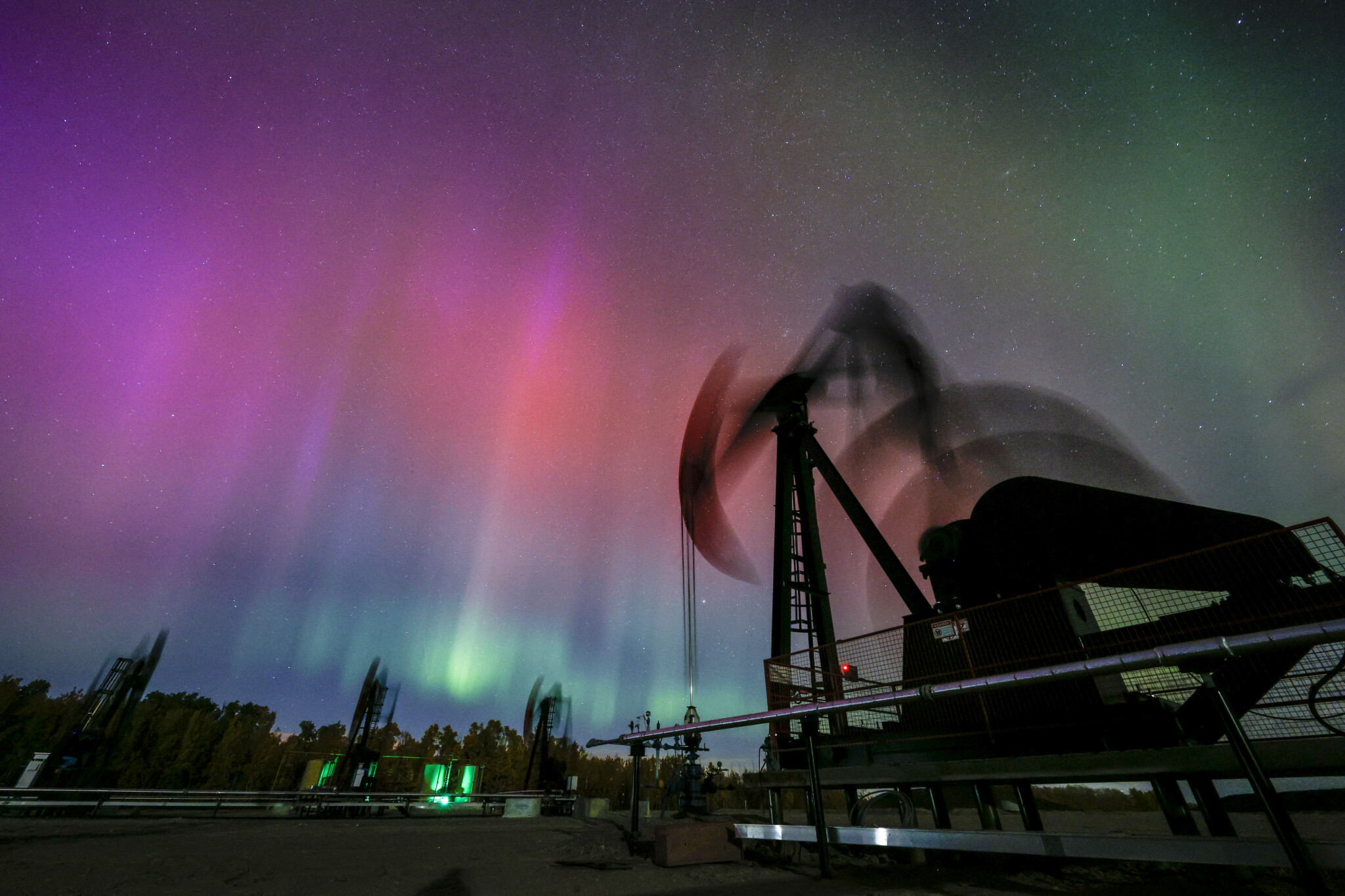DeepDives is a bi-weekly essay series exploring key issues related to the economy. The goal of the series is to provide Hub readers with original analysis of the economic trends and ideas that are shaping this high-stakes moment for Canadian productivity, prosperity, and economic well-being. The series features the writing of leading academics, area experts, and policy practitioners.
Canada’s energy industry needs a carbon policy “time-out.” Antennae are up: more federal climate directives are expected to be telegraphed on the eve of COP29, possibly including final details on a proposed cap for oil and gas sector emissions. Yet before introducing additional policy action, we need to pause and assess what’s already in place across all energy systems and orders of government. Only then should Canada consider new initiatives.
Beyond assessment, efforts should be focused on simplification and harmonization. Applying Occam’s Razor to the complex web of existing policies, carbon markets, and climate-related regulations could greatly benefit our economy, strengthen energy security, and protect the environment. Ignoring this step risks achieving the opposite effects.
Consider the international backdrop against which Canada makes policy. As of 2025, the Paris Agreement will mark its 10th anniversary. Yet it’s unlikely to be a celebration. Despite a decade of stringent policies, global emissions continue to rise. Only a few countries can claim they are on track to meet their 2030 targets, let alone achieve net-zero by 2050. After ten years, the formula of adding more carbon abatement policies to accelerate lower emissions can hardly be deemed successful.
Yet, in Canada, we stand on the brink of even more convoluted and punitive carbon policies aimed at our energy systems—layered onto oil, gas, and electrical power. Adding more rules contradicts the wisdom of favouring clarity and simplicity over complexity. Like overprescribing drugs with potential side effects, additional policies increase the risk of adverse effects on our economy and energy security, as conflicting regulations become harder to understand, manage, and predict. And there’s little assurance that industrial emissions will be reduced any faster.
Prescription drugs come with pages of fine print detailing risk factors. For essentials like heat, light, mobility, and everything that drives our economy, a comprehensive review should similarly document the potential unintended consequences of carbon policies on our energy systems—both individually and collectively.
As we approach COP29, therefore, energy and finance professionals are awaiting the federal government’s next moves. Potentially on the agenda are finalizing the Clean Electricity Regulations, Methane Regulations, and the next iteration of the long-promised emissions cap on the upstream oil and gas industry. These new measures are being layered on top of numerous existing federal and provincial carbon frameworks that shape the future of our energy systems, including clean energy. Who can identify all these policies and regulations, let alone explain them? At COP 29 in Baku, I would challenge anyone to get on a stage and describe how Canada’s carbon policies truly work.
Fragmentation for the nation
Companies in Canada’s upstream oil and gas sector are significant industrial emitters of greenhouse gases and are already under the umbrella of the Greenhouse Gas Pollution Pricing Act (GGPPA) of 2018, which establishes minimum national standards for carbon pricing.
Canada’s provinces and territories were each given the choice to use the federal carbon pricing system or implement their own, provided it met equivalent stringency standards. For industrial emissions pricing, four opted for the federal system, while the remaining nine created their own programs. For example, Alberta’s provincial equivalent is the Technology Innovation and Emissions Reduction (TIER) Regulation.
From the outset, allowing provincial equivalency fragmented Canada’s carbon policy. Each jurisdiction now uses its own nuanced regulations, most with proprietary, opaque, and closed carbon markets. For energy companies operating across provincial borders, this creates overwhelming bureaucratic complexity. For instance, an energy company active in multiple provinces is often subject to inconsistent targets and varying methods of compliance. This confusion is leading to economic distortions in carbon markets with unpredictable impacts on capital allocation. In other words, we are not getting the best emission reduction outcomes for already-scarce investment dollars.
But that’s not all. Across Canada’s energy landscape—from upstream to midstream to downstream—federal and provincial programs are layered, interconnected, and overlapping. Along the vast supply chains of barrels, gigajoules, and megawatt hours, carbon policies aim to encourage, modify, or restrict the behaviour of producers, consumers, and everyone in between. These include the federal Clean Fuel Regulations, the proposed Clean Electricity Regulations, EV industry subsidies, and a host of other federal and provincial policies.
If policies and regulations aren’t assessed collectively, conflicts go unnoticed. How does encouraging upstream biofuel production and refining in British Columbia align with a 2035 federal ban on new combustion engine vehicles that use those fuels? Why is the Clean Fuel Regulation motivating more consumption of biofuels domestically but creating greater dependency on more competitive foreign imports? Such policy clashes, which can lead to wasted capital allocation, are a byproduct of disjointed, piecemeal policy implementations.
An overreliance on policy “prescriptions” has created a multiplicity of “stick and carrot” programs. While none may be individually flawed, together, they create a tangled web of carbon regulations so complex that investors can no longer assess risk and return in our energy systems. When investors can’t understand business risk, they take their money elsewhere. Discouraging investment is yet another consequence of a maze of incongruent and often incomprehensible policies.
Case study: The proposed oil and gas emissions cap
Consider the proposed emissions cap on the oil and gas sector as an example of the challenges in layering complexity onto an already intricate web of regulations, carbon policies, and markets. In December 2023, the federal government released a preliminary framework for this cap, fulfilling a promise from the Liberal government’s 2021 campaign platform. The rationale is that the current industrial carbon tax under the GGPPA isn’t enough to “ensure” emission targets are met. But if that’s the case, why not simply adjust the existing policy instead of adding further complexity?
Indeed, it’s puzzling that the GGPPA’s impact seems to be dismissed in favour of sowing more policy confusion. From 2013 to 2022, the last year for which national emissions data is available, natural gas production and processing emissions have fallen by 17 percent and conventional oil production emissions have declined by 27 percent. The oil sands subsector’s emissions, while up since 2013, have flattened in 2021 and 2022, showing promise for the second half of the decade. Some industrial activities just take more time to demonstrate results, so why not just revisit the existing policy instead of adding to the clutter?
The emissions cap’s regulatory framework, which is subject to change upon the release of final regulations, attempts to define sector coverage, set emissions limits over time, and propose credit allocation within a new cap-and-trade-style carbon market exclusive to the oil and gas sector. Tradable credits will initially be allocated for free, though regulators have yet to clarify how these allowances will be distributed.
The policy scope includes LNG facilities and upstream oil and gas facilities, extending to offshore production. Focusing on a single sector while ignoring others is problematic because each tonne of emissions has the same impact on climate change, regardless of its source. It makes little sense to impose potentially higher economic burdens on one economic sector when you could reduce emissions elsewhere at a lower cost.
The cap’s draft goal is to reduce emissions in the range of 20 percent to 23 percent below 2019 levels, beginning in 2030. This includes some provisions for flexible options—without which the emissions reduction was proposed to be 35 percent to 38 percent.

Delegates walks past an image of oil workers at the World Petroleum Congress in Calgary, Monday, Sept. 18, 2023. Jeff McIntosh/The Canadian Press.
Questions abound. Will this newly proposed carbon market displace Alberta’s existing TIER system (a substitute for the federal GGPPA), compete with it, or conflict with it? And how will the cap interact with carbon policies in other oil-producing provinces like B.C., Saskatchewan, and Newfoundland and Labrador? Can a producer with excess credits in one province sell them in another province’s existing carbon market? Will the inability to reduce emissions fast enough to meet 2030 targets result in a curtailment of hydrocarbon products that are vital to the economy?
Bigger questions remain: to what extent will trading carbon credits within the oil and gas cap framework create distortions in other carbon markets, with the potential to weaken the funding for clean energy companies? Oil and gas producers are major purchasers of credits generated by clean energy firms, which represents a major source of their finance. Could introducing another carbon market inadvertently harm the clean energy ecosystem? And will the rules of one market apply to the other? No one really knows—and that’s the problem.
Impacts to the economy, employment, and energy security
At a minimum, misaligned and conflicting carbon policies are suboptimal for reducing emissions. More concerning, however, is the potential harm to Canada’s economy and energy security during a globally vulnerable moment. With active conflicts in Eastern Europe and the Middle East, volatile politics, geopolitics, and macroeconomics, this is a risky time for any country to compromise its energy systems.
In addition to meeting vital energy needs, Canada’s upstream oil and natural gas sector is the nation’s largest resource industry, generating over $180 billion in annual revenues in 2023 alone. It makes a substantial contribution to GDP, employment, taxes, and royalties, as well as to the country’s trade balance. Love it or hate it, this industry fits the financial maxim “too big to fail,” especially in these economically fragile times.
On the point of energy security, diversifying into renewables, nuclear power, and new downstream processes is essential to reducing reliance on geopolitical adversaries. However, building this system redundancy requires time and investment. A lack of policy harmony and clarity is also slowing the adoption of new systems, as incumbent energy sources are needed to help finance the transition. In the realpolitik of today, we cannot ignore the new Cold War era we’ve entered. Canada’s oil and gas output is 17 percent of what the Western Alliance produces. Any near-term decline would be felt by our allies.
The proposed suite of new carbon policies (including the anticipated emissions cap) does not directly imply that oil and gas production will decline. However, the formula in the energy business is fairly simple: less ongoing investment to sustain production leads to quickly falling output. In fact, investors, boards of directors and corporate leaders are already considering redirecting capital elsewhere—a trend echoed in recent studies warning of the negative impacts of the emissions cap.
For example, Deloitte, the Conference Board of Canada, and S&P Global have all advised that implementing the proposed cap will likely lead to lower GDP, reduced investment, and job losses. Deloitte projects that by 2040, Canada’s GDP could fall by 1 percent, with over 110,000 jobs lost—most of them in Alberta, where GDP could decline by 4.5 percent. The Conference Board provides similar estimates, forecasting a 0.9 percent GDP drop by 2030, a $7.5 billion reduction in investment, and 82,000 fewer jobs. S&P Global, assuming more ambitious emissions targets, anticipates a $247 billion GDP loss and over 50,000 fewer jobs by 2035.
If the emissions cap reduces investment and production, it will likely result in job losses, especially in rural and Indigenous communities across Western Canada. A 2021 report from Natural Resources Canada found that around 30 percent of jobs in over 1,800 rural communities depend on the natural resource sector. These positions provide well-paying, stable employment, enabling residents to remain close to family and maintain strong local connections.
In 2023, oil and gas extraction jobs averaged nearly $2,900 per week—far higher than the $1,500 average in goods-producing sectors and $1,150 in services. This wage advantage is especially valuable for Indigenous workers, who earn a median income of $99,000 in mining and energy, more than twice the Indigenous median across all industries. Additionally, around 25 percent of these energy roles are held by individuals with a high school diploma or less, making the sector a key contributor to Canada’s middle class by providing stable, well-paying jobs amidst economic polarization.
No one can predict the full impacts of the existing and proposed carbon policies, especially their combined effects over the next decade and beyond. However, enough analysis has been conducted to suggest that the stability of Canada’s energy security, socio-economic conditions, and the labour market is at risk from an unnecessarily complex regulatory overlay.
Concluding thoughts
Basic carbon policy is straightforward: increase costs for emitters while providing incentives to those who invest in cleaner energy systems. Pair “sticks” and “carrots” in a balanced manner through one unified carbon market, giving participants the time and flexibility to innovate. Avoid excessive rules that create confusion—clarity will attract investors.
Today, Canada’s energy landscape is burdened by a complex array of multi-jurisdictional policy frameworks that are excessively layered, chained, and poorly paired. This discord is compounded by the existence of 11 largely illiquid and opaque carbon management systems, with no mechanisms for trading credits and offsets between them. It’s akin to running our central banking system through a string of regional banks, each operating with its own proprietary currency, none of which is exchangeable with the others.
Although spreadsheets and models have attempted to unravel this complexity (and I have also immersed myself in the numbers), it doesn’t take an econometrics degree to see that piling more policy onto an already dysfunctional framework makes little sense. This is the strongest argument against adding more policies like the proposed federal emissions cap on the oil and gas industry before sorting out what’s in place.
Admittedly, it’s easy to highlight problems in just about anything these days, and armchair critics offering complaints without solutions are plentiful. So, what should we do about our policy and regulatory landscape, given the need to balance economic, social, and energy security concerns alongside carbon emission reductions?
We can begin with what not to do: avoid adding new carbon policies and regulations until the current landscape is assessed and streamlined. Likewise, the abrupt dismantling of existing policies is unwise, as it could lead to unintended consequences for those now relying on them. It’s a challenging situation, but improvement is possible.
The first step is to pause and take stock of all environmental and fiscal policies—federal and provincial—across every energy system. Figure out what is working and what isn’t. Create a list of risk factors. By thoroughly assessing the current carbon policy landscape, the hope is that revealing its complexity and discord will encourage all stakeholders to simplify and strengthen what exists before adding further layers to an already tangled system.











